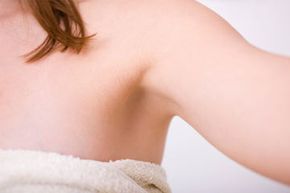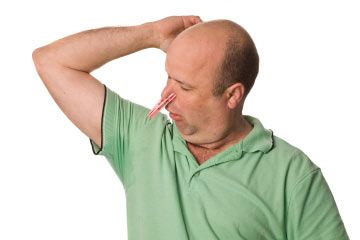Whether you're throwing on a tank top for an aerobics class or slipping into a bathing suit for a day in the sun, your grooming ritual might include shaving or waxing your underarms for a smooth and hair-free look. The skin might be smooth and bump-free for a while, but a few days later you might notice itchy, red bumps in your underarm area. These bumps generally are a sign of ingrown hairs, a pesky problem that is hard to avoid. Fortunately, there are steps you can take to treat them.
Ingrown hairs are strands of hair that either begin growing but stay embedded in the skin or curl over and work their way back into the hair follicle [source: Toronto Cosmetic Clinic]. You'll notice ingrown hairs showing up most often after you shave. Though they're typically not dangerous, they can become infected and cause pimples to pop up, and at their worst, they can cause scarring [source: WebMD].
Advertisement
Ingrown hairs are capable of developing under skin on any area of your body, especially the face and legs, but they can be particularly annoying when they plant themselves in your armpit. All the friction from moving your arms and your shirt rubbing against your skin, plus the irritation often caused by deodorant, can make the bump feel even worse.
Instead of dealing with the discomfort of ingrown hairs, you can try some preventive measures, such as using a shaving cream or gel, exfoliating dead skin cells away and moisturizing after shaving [source: Brigham and Women's Hospital]. However, if you simply cannot head off ingrown hairs, keep reading to learn about medications and other methods for treating the irritation before you end up with a bigger problem.
Advertisement

